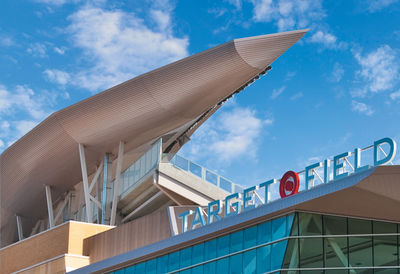
Contact Details:
Lindapter International
Lindsay House
Brackenbeck Road
Lidget Green
Bradford
West Yorkshire
BD7 2NF
United Kingdom
Tel: +44 (0)1274 521444
Fax: +44 (0)1274 521130
Send Enquiry | Company Information

Lindapter Secures Target Field Canopy
Product News Tuesday, November 30, 2010: Lindapter International
The $425 million Target Field ballpark features an inspiring 1,988 ton steel sunshade canopy that sweeps around the stadium, with a 7,432 m² glistening soffit safely suspended overhead with Lindapter steelwork fixings.
The 40,000 seat, open-air Target Field is the new home of Minnesota Twins, an American professional baseball team based in Minneapolis, Minnesota. The architecturally stunning curved canopy presented a challenge to the connection design due to the connecting beams varying in size and angle throughout. The engineers also had to meet a vital criterion of accommodating up to 22.3kN of wind load, while the contractor favoured a simple to install, universal connection that could be used on both primary and secondary steel sections.
Lindapter provided a single solution that exceeded these requirements with the Type LR Girder Clamp (M20) connection system, independently approved to a safe working load of 58.8kN at a 5:1 factor of safety. The self-adjustable assembly is compatible with flange thicknesses of 3 to 20mm, while an over-sized slotted location plate enabled the simple adjustment to fit variations in beam width and connection angle. The efficient connection allowed the canopy risers to be easily aligned into position, allowing a faster installation in comparison to more time consuming conventional methods such as drilling, or repeated tack welding and grinding, thereby reducing on-site costs.
As the installation did not require hot working it was not necessary to renew the corrosion protection at over 1,200 connection points and more importantly, the structural integrity of the primary steel was maintained. As the canopy construction largely consisted of elevated and overhead work, eliminating drilling, welding and grinding contributed greatly to the overall safety of the project.
